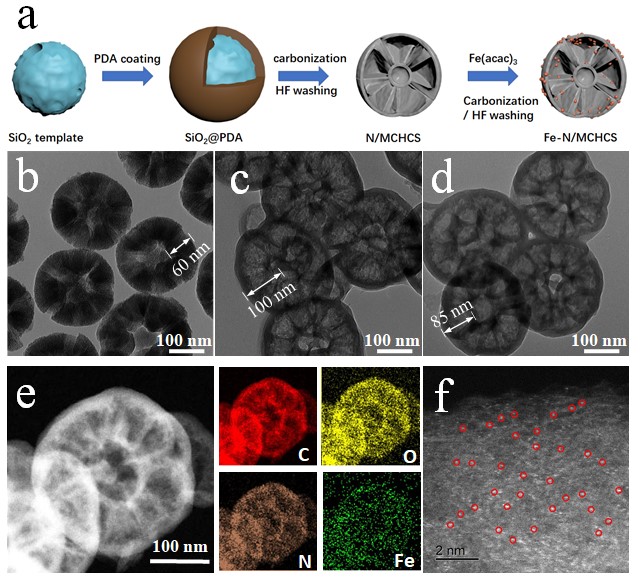H.D. Shi, P.P. Su, C. Dong, J. Liu*, Z.-S. Wu*
Batteries & Supercaps, 2022, 5, e202200154.
DOI: 10.1002/batt.202200154 [PDF]

Lithium-sulfur (Li-S) batteries have been highlypraisedfor the key rechargeable batteries due to their numerous advantages. However, the sluggish conversion and shuttling effect of polysulfides restrict their practicality. Here we rationally design the multi-cavity hollow carbon spheres doped with atomic Fe-N sites (Fe-N/MCHCS) asphysically/chemically double-confined catalyticnanoreactors for the efficient sulfur host materials. The Fe-N/MCHCS with hierarchical porous structure and high pore volume ensures the high loading mass, and the multi-cavity structures significantly buffer the volume expansion of sulfur and enhance the electronic contact. Meanwhile, atomic Fe offers chemical binding site and efficiently catalyze the conversion of polysulfides during cycling, thusimmobilizing and alleviating the shutting effect of polysulfides. Consequently, the Fe-N/MCHCS nanoreactor based Li-S batteries deliver a long cycling life of 1135 mAh g-1after 300 cycles at 0.5 C and high-rate capability of 1055 mAh g-1at 8 C. Even under practical conditions with a highsulfurmass loading of 5.0 mg cm-2, a steady areal capacity of 4.85 mAh cm-2is attained. This strategy combing multi-cavity hollow carbon with single atom catalysis opens a reliable route to design highly stable and high-performance Li-S batteries.